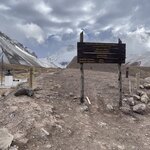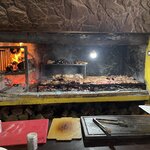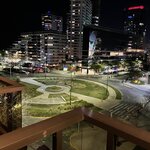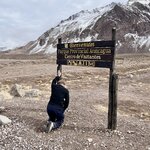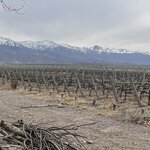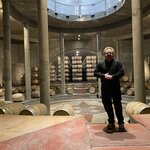Highlights
- Go on a walking tour of Buenos Aires and visit some of the city's iconic historic sites
- Stroll the streets of San Carlos de Bariloche, the main city in Argentina's Lake District
- Hit the slopes of Bariloche, the premier skiing destination in Argentina
Brief Itinerary
| Day | Highlights | Overnight |
|---|---|---|
| Day 1 | Arrival in Buenos Aires - Explore the City | Buenos Aires |
| Day 2 | Full-Day Buenos Aires Walking Tour | Buenos Aires |
| Day 3 | Buenos Aires to Bariloche | Bariloche |
| Days 4-6 | Cerro Catedral Ski Excursion | Bariloche |
| Day 7 | Bariloche to Buenos Aires & Departure |
Detailed Itinerary
Day 1: Arrival in Buenos Aires - Explore the City

Welcome to Argentina! Renowned as the "Paris of South America," and the "Queen of El Plata," the capital city of Buenos Aires is defined by passion. This is exemplified in the rich tango heritage and its citizens' limitless enthusiasm for fútbol (soccer), which is far and away the country's most popular sport.
When you arrive at the airport, your driver will be waiting to take you in a private car to your hotel where you can relax after a long flight. But make no mistake: the city will beckon you. So after a quick recharge, be sure to venture out into the welcoming arms of Buenos Aires and explore. The best starting point would be the city center.
Suggested activities include:
-
Visit the Obelisco, which might be the most famous icon of the city. This obelisk (which even Argentines admit is a little too reminiscent of the Washington Monument) is worth a visit for its location alone. It sits right in the middle of Avenida 9 de Julio, which boasts a whopping 16 lanes, making it the widest city street in the world.
-
Stop by the Teatro Colon, one of South America's premier opera houses. The horseshoe-shaped gallery features 2,487 seats and incredible acoustics. Even if you plan on taking a tour or catching a show here on another day, it's always breathtaking to pass by its exterior. The Colon's neoclassical facade has been the face of one of the most handsome buildings in Buenos Aires since its opening in 1908.
-
Stroll Puerto Madero, an upscale waterfront neighborhood adjacent to downtown. Puerto Madero may be the "new money" finance center of Buenos Aires, but it's also one of the most pleasant walking areas in a city famous for its walking areas. A romantic stroll involves walking over the canal on the Puente de Mujer ("Woman's Bridge") at sunset.
- Dine at an Argentine steakhouse or parilla. When night falls and dinnertime arrives, do like the locals and enjoy a thick, juicy steak (Argentina has some of the best beef in the world) drizzled with the nation's famous chimichurri (a garlic, herb, and vinegar sauce). Know that Buenos Aires is a culture that thrives after dark, and it's not uncommon for locals to have dinner well past nine in the evening, especially on weekends.
Day 2: Full-Day Buenos Aires Walking Tour

To properly experience Buenos Aires, you must do so on foot. So after a fortifying breakfast prepare yourself for a day of walking and sightseeing throughout this European-inspired metropolis. You'll hit all the main points of interest, aided every step of the way by an English-speaking guide.
Some highlights of the walking tour include:
-
Plaza San Martín, located at the end of downtown's commercial pedestrian thruway, Florida Street. This leafy plaza, anchored by a majestic ombú tree, is named after one of the heroes of Argentina's independence movement, General José de San Martín.
-
The Obelisco, an icon that sits at the nexus of the city where the 16 lanes of Ave. 9 de Julio cross bustling Corrientes Ave. Here you'll find Buenos Aires' theater and music district. It's a hub of activity any day of the week but it's particularly alive on weekend evenings.
-
Colón Theatre, a nearly 2,500-seat teatro that is perpetually vying with Rio de Janeiro's Theatro Municipal for the title of the most opulent opera house in South America. The building's elegant neoclassical exterior and pitch-perfect interior acoustics make this building a must-visit.
-
Plaza de Mayo, which is Buenos Aires' main square and home to the Casa Rosada, Argentina's presidential palace. The plaza is the site of some famous events, including the May Revolution of 1810 that kicked off this former Spanish colony's quest for independence. The famous "pink house" (as the presidential palace is colloquially known), is also rife with history. It's on the front balcony that dictator Juan Perón made some of his most famous speeches with his glamorous wife, Evita, at his side. Ultimately it was she who won the hearts and minds of the Argentine people.
-
Metropolitan Cathedral, is the principal Catholic church in the city and another historic building that also faces the Plaza de Mayo. It was consecrated in 1791 but its earliest origins date back to the late 16th century when a humble chapel first sat on the current site.
-
Puerto Madero, whose shimmering office towers and central canal make this one of the most elegant neighborhoods in the city. Some upscale restaurants can be found here, as can Puente de la Mujer, a bridge whose sleek and sensual lines define its title of "Woman's Bridge."
-
Barrio San Telmo, which is BA’s oldest neighborhood and boasts a vibrant tango and arts scene. Its antique markets, cobbled streets dotted with faroles (French streetlamps), and old brick buildings with wooden balconies all add to the uniquely bohemian atmosphere. Sundays are especially buzz with activity as the main street market comes alive around Plaza Dorrego.
-
Barrio La Boca is a well-preserved historic neighborhood that's nearly as old as San Telmo. The area is known for La Bombonera the stadium of one of two principal soccer teams in the city: Boca Juniors. It's also home to colorful Caminito Street, a pedestrian zone teeming with old restaurants and tanguerías.
- Cementerio de Recoleta, this sprawling cemetery is located in the "old money" enclave of Barrio Recoleta. It's filled with the ornate mausoleums of famous, notable, and wealthy Argentines from throughout history. It also happens to be where Evita Perón is interned.
Chat with a local specialist who can help organize your trip.
Day 3: Buenos Aires to Bariloche

After enjoying the exciting city life in Buenos Aires, it's time to head for the southern wilderness. At the scheduled time, a driver will pick you up from your hotel and transfer you to Bueno Aires' local airport, Aeroparque. From here you'll catch a flight to San Carlos de Bariloche, the main city in Argentina's Lake District, which is home to some of the most impressive scenery in the entire country.
San Carlos de Bariloche was founded in 1902 on the shores of Lago Nahuel Huapi, which itself is part of the larger Parque Nacional Nahuel Huapi. If you detect some native influence in that name, you're correct. It comes from the Mapuche indigenous people who once inhabited the area, and it means "jaguar island." The lake straddles the Chilean border, with the city of Bariloche located on the southeast shore. While beautiful in the summertime, Bariloche became globally famous as a prime winter ski destination. So be excited, because you're about to experience the best slopes in the whole of Argentina.
Upon arrival at Bariloche's airport, a driver will meet you and transfer you to your hotel. Even though you may be tired from your flight, try to get out and explore the city. The charming chalet-style buildings and alpine architecture can be seen and enjoyed on a brisk walk around, and the city center abounds with waterfront plazas, chocolate shops, and upscale restaurants.
Some suggested activities in and around Bariloche include:
-
Stroll Mitre Street, the main drag that runs through downtown. Here you'll experience all the buzzing commerce of the city, including souvenir shops, clothing stores, and confectioners. It also runs near the waterfront, which only enhances the pleasantness of the walk.
-
Visit the five-star Hotel Llao Llao, the nicest hotel in Bariloche, and quite possibly the nicest in all of Argentina. This expansive chalet-style hotel sits on a small peninsula overlooking the lake and is the embodiment of mountain luxury. Even if you're not staying here, you can stop in for a full afternoon tea service complete with decadent desserts like brownies and chocolate mousse.
- Ride a cable car to the top of Cerro Campanario. Located just a couple of kilometers outside town, the view from atop this 1,050-meter (3,444-foot) high mountain is nothing short of breathtaking as you're treated to panoramic views of Lago Nahuel Huapi and the snow-covered mountains that surround it. There's also a restaurant and lounge at the top.
When dinnertime comes around, be sure to sample the local cuisine. You'll find that it differs considerably than what's typically found in Buenos Aires. Here regional fare like wild boar and lake trout is popular and delicious, as is the fondue (a culinary addition first introduced by the city's Swiss immigrants).
Days 4-6: Cerro Catedral Ski Excursion

Wake up bright and early and enjoy a hearty breakfast. You're going to need the fuel because you'll be spending the day on the slopes of Argentina's premier ski destination: Cerro Catedral. This 2,338-meter (7,640-foot) mountain boasts 120 kilometers (75 miles) of slopes of varying levels of difficulty. Whether you're a first-timer on a pair of skis (or snowboard) or if you're a seasoned pro, you're sure to find many options to suit your ability. There are even 52 kilometers (32 miles) of cross-country ski routes if you'd like to test your endurance.
But first thing's first. After breakfast, you'll transfer to our office in the city center (as you will do every morning on subsequent ski days) and hop in a vehicle that will whisk you away to the mountain. Upon arrival, the driver will guide you to the office where you can pick up your equipment and passes. Then, from 9 am to 4 pm, you will enjoy the rush of carving your way down Cerro Catedral complimented by all the beautiful scenery of Lago Nahuel Huapi and the surrounding mountains.
The amenities here won't disappoint, either. At the base of the mountain, you'll find many restaurants and a ski school as well as nursery care for young children.
Day 7: Bariloche to Buenos Aires & Departure

Having experienced Argentina's unforgettable south, you will transfer from your hotel to the airport and hop a flight back to Buenos Aires. This is where you started your journey and it's also where everything comes full circle, as you'll now take a connecting flight back home.
Despite the bittersweet goodbye, rest assured that we will be waiting for you with open arms should you ever decide to return!

